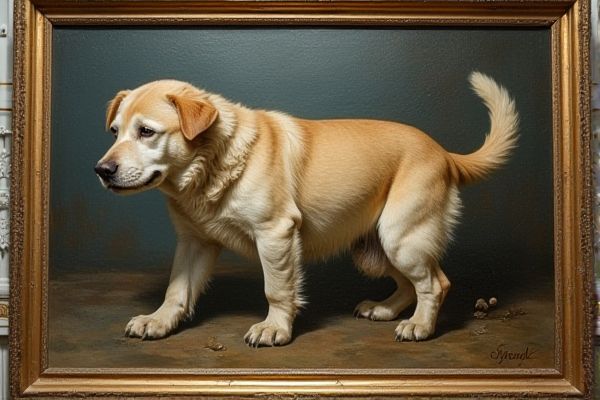
AI enhances art restoration by enabling precise analysis of artworks, identifying underlying structures and previous restoration layers. Machine learning algorithms can examine vast databases of art images, aiding in developing techniques to replicate original styles and materials. Automated tools assist in cleaning surfaces, filling cracks, and restoring colors, ensuring minimal intervention while maintaining the artwork's integrity. Predictive models can also forecast the degradation of materials, allowing conservators to implement preventive measures to prolong the life of artworks.
AI usage in art restoration and preservation
Image Analysis Algorithms
AI can enhance art restoration and preservation by employing image analysis algorithms to detect subtle damages that may be invisible to the naked eye. These algorithms have the potential to analyze color patterns and textures, offering insights into artists' techniques, such as those used by Vincent van Gogh. The chance to restore artwork with precision can extend the lifespan of valuable pieces, making them more accessible for future generations. Institutions like the Getty Conservation Institute are exploring these tools, highlighting the possibility of combining technology and art conservation.
Digital Reconstruction
AI enhances art restoration and preservation by analyzing artworks with greater precision. For example, digital reconstruction techniques can recreate missing parts of a painting, allowing for a more complete representation of the original piece. This technology also enables institutions like the Louvre to assess the condition of their collections more effectively. The possibility of using AI to predict deterioration patterns offers a strategic advantage in conservation efforts.
3D Modeling and Printing
AI technology offers promising advantages in art restoration and preservation by analyzing and reconstructing damaged artworks. Through 3D modeling, it can create accurate digital representations of art pieces, facilitating better documentation. Printing replicas of these art pieces using advanced techniques can help in educating the public while preserving the originals. Institutions like museums could significantly benefit from implementing these technologies in their restoration processes.
Color Restoration Techniques
AI has the potential to enhance art restoration and preservation by automating color restoration techniques. For instance, algorithms can analyze historical artworks to predict the original color palettes, bringing them closer to their intended appearance. This not only increases the accuracy of restorations but also reduces the time required for skilled professionals at institutions like the Metropolitan Museum of Art. The integration of AI might open new avenues for researchers to study art history through a more precise lens.
Damage Detection Systems
AI can enhance the efficiency of art restoration through advanced damage detection systems. These systems use machine learning algorithms to analyze artwork for signs of deterioration or damage, allowing conservators to prioritize their efforts. Institutions like the Getty Conservation Institute are exploring these technologies to preserve invaluable artifacts. The possibility of identifying issues early can significantly improve the longevity and integrity of art collections.
Virtual Reality Exhibit
AI can enhance art restoration by analyzing and predicting the best techniques to preserve artworks, offering potential improvements in the quality of restoration outcomes. For example, institutions like the Louvre are exploring AI tools to assist in restoring and preserving their collections. Virtual reality exhibits can provide an immersive experience, allowing audiences to engage with art in new ways and broadening access to previously inaccessible works. This combination of technology may lead to greater public appreciation and understanding of cultural heritage artifacts.
Machine Learning Forecasting
AI has the potential to enhance art restoration and preservation through techniques such as image analysis and pattern recognition. Machine learning can predict the degradation of artworks by analyzing environmental factors, allowing for timely interventions. Institutions like the Getty Conservation Institute are exploring these technologies to improve preservation strategies. The possibility of reducing restoration costs and improving accuracy is a significant advantage for museums and galleries.
Archival Metadata Management
The application of AI in art restoration and preservation can significantly enhance the accuracy of recreating lost details in artwork. Through advanced image analysis, machine learning algorithms can assess the condition of artworks, leading to more informed restoration decisions. In archival metadata management, AI can streamline the organization and retrieval of historical documents, improving access for researchers and historians. Institutions like the Smithsonian are already exploring these technologies to preserve cultural heritage efficiently.
Automated Conservation Documentation
AI technology offers significant potential in art restoration and preservation by enhancing accuracy in automated conservation documentation. With methods such as image recognition, detailed analysis of artworks can be performed, allowing restorers to identify issues that may not be visible to the naked eye. For instance, institutions like the Getty Conservation Institute can benefit from these advancements by streamlining their restoration processes. The chance of improving the longevity and quality of artworks increases as AI assists conservators in making informed decisions based on data-driven insights.
Interactive Restoration Tools
AI can enhance art restoration by analyzing existing artworks and suggesting restoration techniques based on historical data. Interactive restoration tools allow conservators to simulate changes and visualize outcomes before actual restoration. For example, institutions like the Louvre use AI to aid in preserving their extensive collection. This technology increases the chance of maintaining an artwork's integrity while offering innovative ways to engage with art history.
 techknowy.com
techknowy.com